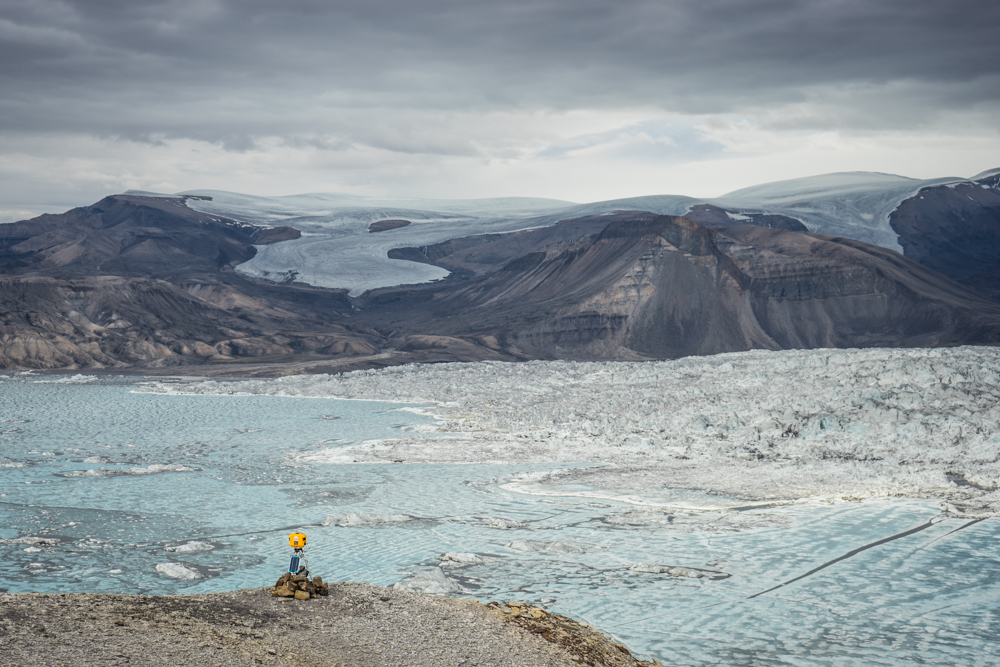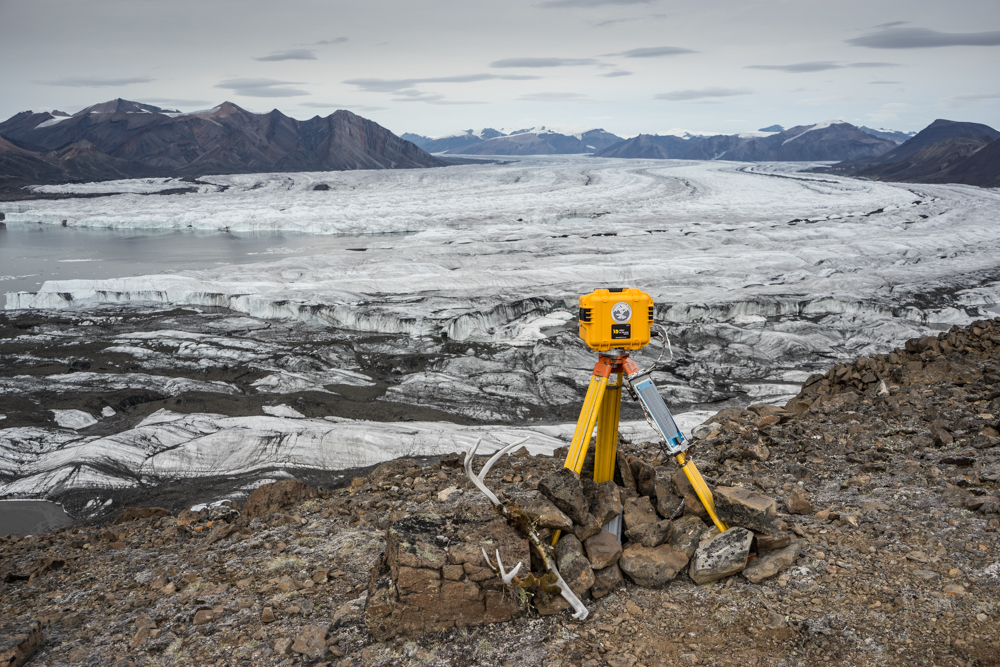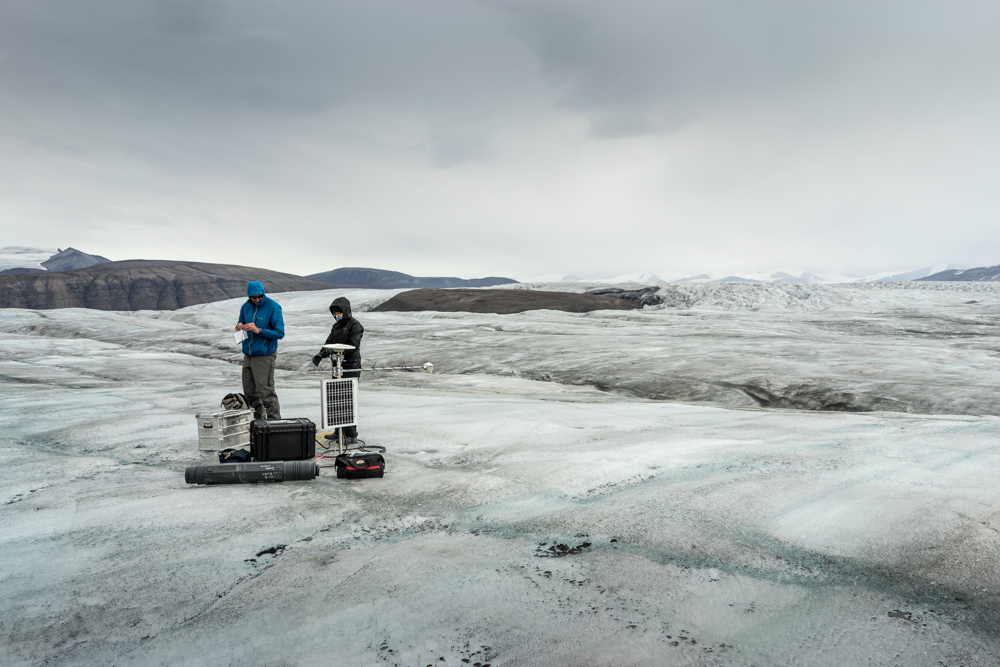Project title: Irregular flow of surge-type glaciers
Most glaciers flow at a similar speed from one year to the next, but a few undergo dramatic changes in velocity over a period of years to decades. These are called surge-type glaciers, and they alternate between two phases: a long quiescent phase in which the glacier is almost stationary, and a short period of extremely rapid flow where ice speeds can be 100-1000 times higher (over 1 km per year). Surge-type glaciers follow a non-random distribution and cluster in specific glaciated regions including Alaska, Svalbard, Greenland and Iceland, as well as the Canadian High Arctic.
The question as to what triggers surges has long been a mystery in glaciology, especially due to the challenges of obtaining field data during the active phase of a surge. Most of our work is therefore based on remote sensing data which allows the monitoring of regional-scale surging patterns. During a surge, glaciers show specific changes such as rapid terminus advance and intense crevassing that can be easily detected on satellite imagery. An understanding of the causes of glacier surging is important so that we can properly distinguish between glacier changes caused by climate change versus those caused by internal glacier dynamics.
The most dramatic recent glacier surges have been observed on western Axel Heiberg Island, where both Good Friday Bay and Iceberg glaciers have advanced several kilometers since the 1950’s. In the summer of 2015 we visited these glaciers and installed a series of GPS stations to measure changes in their velocities, as well as timelapse cameras to monitor their terminus changes and iceberg calving rates. Field data will provide information on the dynamics of both glaciers and potentially help understand their surge mechanisms. Remote sensing data is also being used to reconstruct the chronology of past surges throughout the Canadian High Arctic, and to help answer the question as to why some glaciers surge, while others do not.
Study site locations: Iceberg (79º28’N, 92º15’W) and Good Friday Bay (78º33’N, 91º30’W) Glaciers; nearest communities are Grise Fjord (350 km to the southeast) and Eureka (100 km to the east). Logistics are based out of PCSP, Resolute Bay.
Collaborations: McGill University (Wayne Pollard, director of the McGill Arctic Research Station)
Project contacts:
Dorota Medrzycka
PhD Student, University of Ottawa
dorota.medrzycka@uottawa.ca
+1 613 562-5800 x3913
Luke Copland
Associate professor, University of Ottawa
luke.copland@uottawa.ca
+1 613 562-5800 x2826


